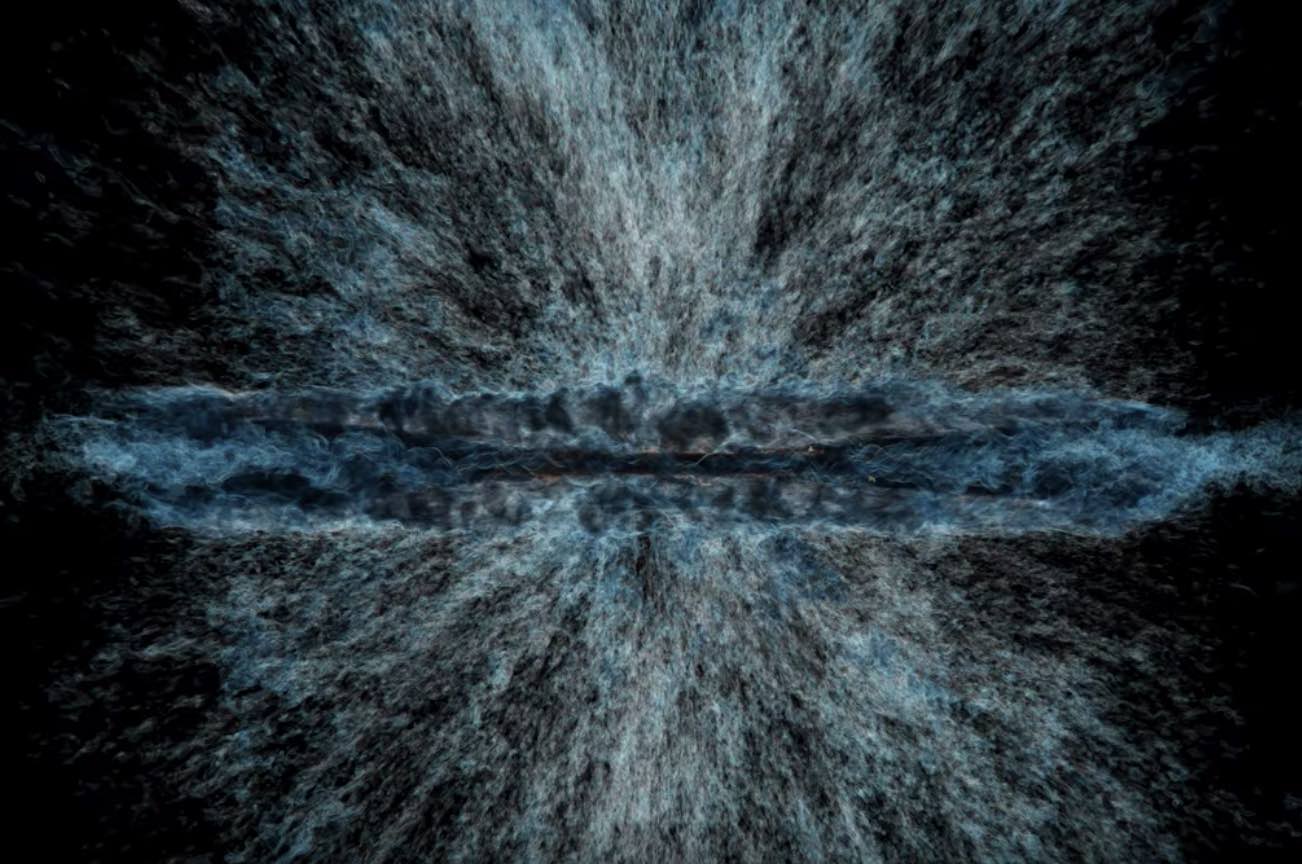 In this video, a galactic wind simulation depicts interstellar gas and stars (red) and the outflows (blue) captured using the Cholla astrophysics code.
In this video, a galactic wind simulation depicts interstellar gas and stars (red) and the outflows (blue) captured using the Cholla astrophysics code.
Using the Titan supercomputer at Oak Ridge National Laboratory, a team of astrophysicists created a set of galactic wind simulations of the highest resolution ever performed. The simulations will allow researchers to gather and interpret more accurate, detailed data that elucidates how galactic winds affect the formation and evolution of galaxies.
Brant Robertson of the University of California, Santa Cruz, and Evan Schneider of Princeton University developed the simulation suite to better understand galactic winds—outflows of gas released by supernova explosions—which could help explain variations in their density and temperature distributions. The improved set of galactic wind simulations will be incorporated into larger cosmological simulations.
We now have a much clearer idea of how the high speed, high temperature gas produced by clusters of supernovae is ejected after mixing with the cooler, denser gas in the disk of the galaxy,” Schneider said.
Cholla is a GPU-based hydrodynamics code I developed as part of my thesis work at the University of Arizona. It was designed to be massively-parallel and extremely efficient, and has been run on some of the largest supercomputers in the world. I am committed to keeping Cholla free and open-source. The most recent public release of the code can be found on GitHub.
Source: Elizabeth Rosenthal at ORNL
Sign up for our insideHPC Newsletter




